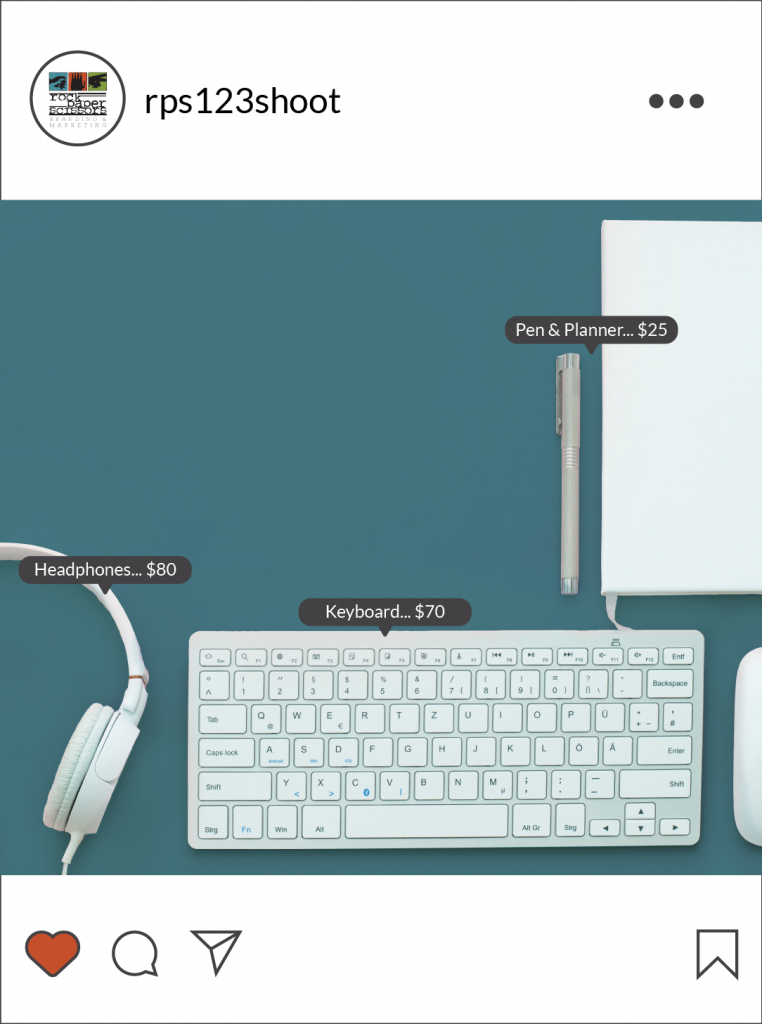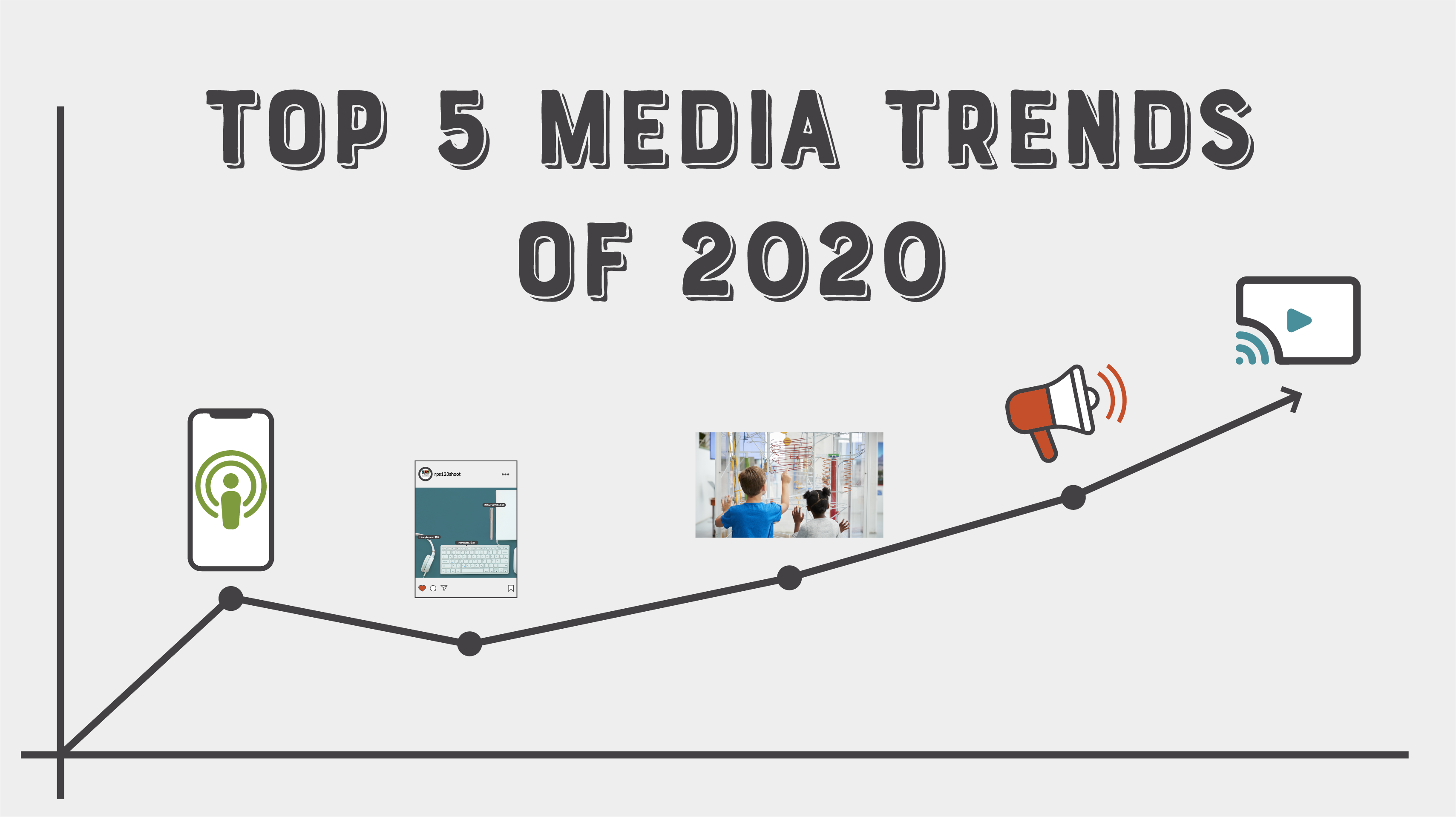The start of a new year is a great time to look at your current marketing and advertising efforts and determine what changes you need to make in order to achieve your goals for the year. There are many ways to get your message in front of your audience, and with so many options it can be hard to choose. However, we’re here to help you narrow down the choices with a look at the top five media trends of 2020.
1. Niche Marketing – Podcasts

Podcast advertising in 2019 was roughly $500 million. By 2021 it will double to over a Billion. As Digital Banner ads continue to saturate our every move online, Podcast advertising captures audiences’ attention via perceived relationships. Listeners are engaged and trust the content creators. Podcasting attracts adults of all ages (18-54) and an equal number of men and women. The niche of podcasting means there is something for everyone. Unlike radio, podcasts offer the personal intimacy of yesteryear. It brings back memories of what radio once was.

2. Shoppable Posts
With how many people use at least one form of social media, it makes perfect sense to provide an opportunity for shoppers to make purchases directly through the given network.
Recent statistics suggest that almost ¾ of Instagram users have made a purchase through the app. This has created an opportunity for social networks to use their platform as an extension of merchants’ websites by providing the opportunity to create shoppable posts.
3. Interactive Content
How do you attract new customers in a cluttered environment? Create new experiences. Create content that has interactivity that engages them.
What kind of content? Visual. Simply put, today’s shoppers don’t have time for lengthy reads. They want to be visually stimulated and have the opportunity to interact and learn more.
Lastly, there is an added benefit for brands who create such content. Interactive content aids in brand awareness, as it is easily shared and much more likely to be viewed than other forms of content.


4. Online PR
Online PR uses a variety of techniques to provide a visibility campaign aimed at increasing a website’s Domain Authority. By generating content and then pushing it out to syndication, Online PR increases the number of keywords associated with a website as well as create strong backlinks from national media sources. This strategy is essentially a “White Hat SEO” strategy.

5. Non-linear TV
Non-traditional TV has multiple names (On-Demand, Non-Linear, OTT/Connected). On-Demand TV is also known as non-linear TV and refers to viewers selecting and watching content whenever they wish (think DVR).
Connected TV, or CTV, refers to any TV that can be connected to the internet and access content beyond what is available via the normal offering from a cable provider. It also refers to devices that use a television as a display and can connect to the internet to access content. OTT (over-the-top) Devices such as Apple TV, Roku, and Amazon Fire are used to deliver services.
These formats allow for customized advertising experiences. Advertisers can purchase audiences, using household-level profiling (HHI) and segmentation to deliver different TV ads tailored to different households watching the same program. The software sits inside the DVR (set top box), allowing the network provider to serve custom ads to the households. Network providers include Comcast, Dish, DirecTV/ AT&T, Cablevision, and Verizon.
This year, using the top five media trends of 2020 to get your message out to a wider audience can really help give your business a boost. With such a range of options, there is a good fit for nearly every organization and budget, and if you’re interested in learning more about the options and whether media is a good fit for you, we’d love to talk! Contact us and we’ll be in touch to schedule a time to discuss the options with you.


